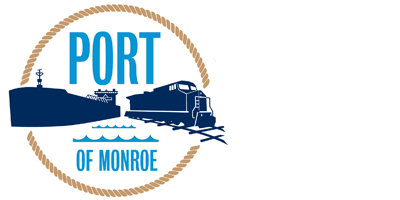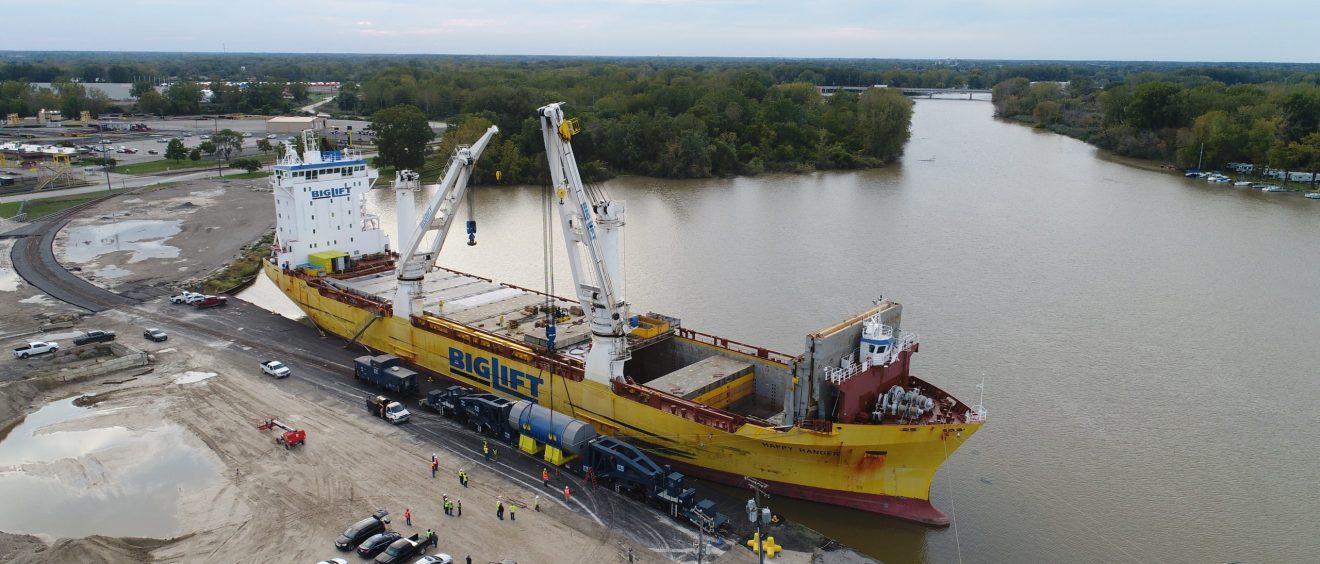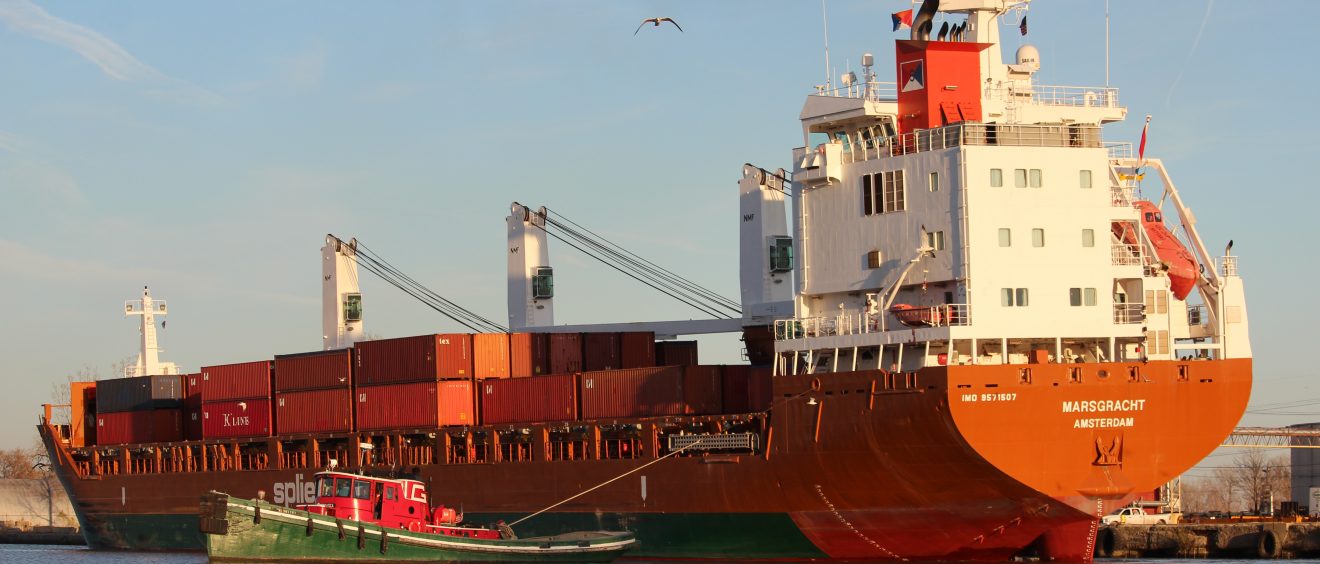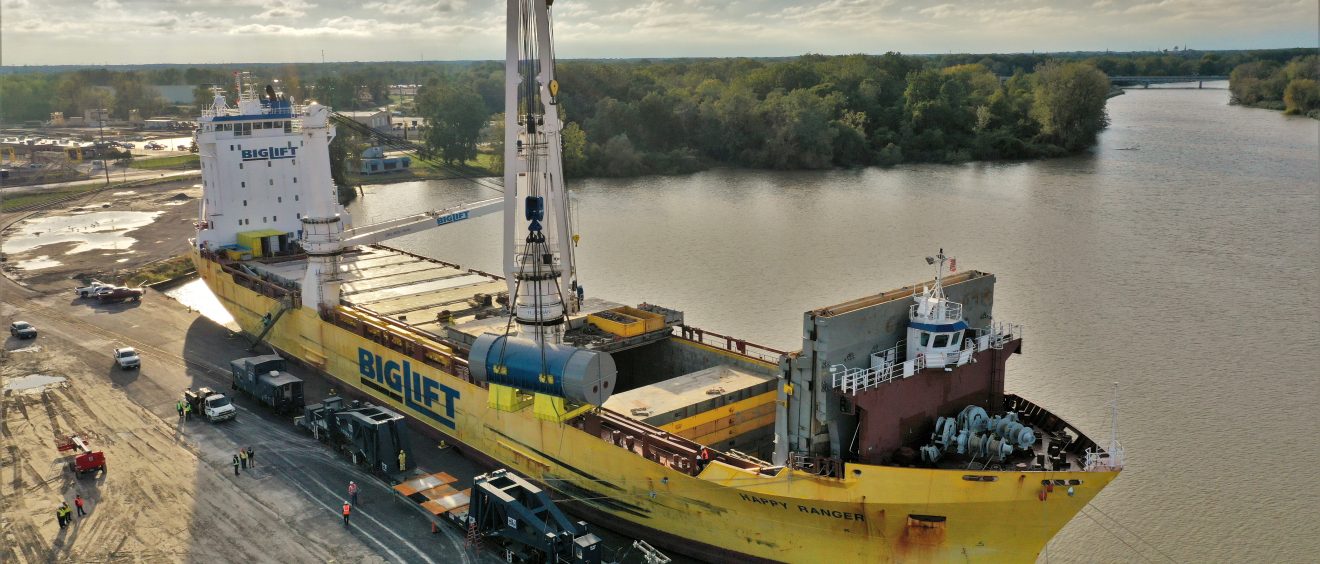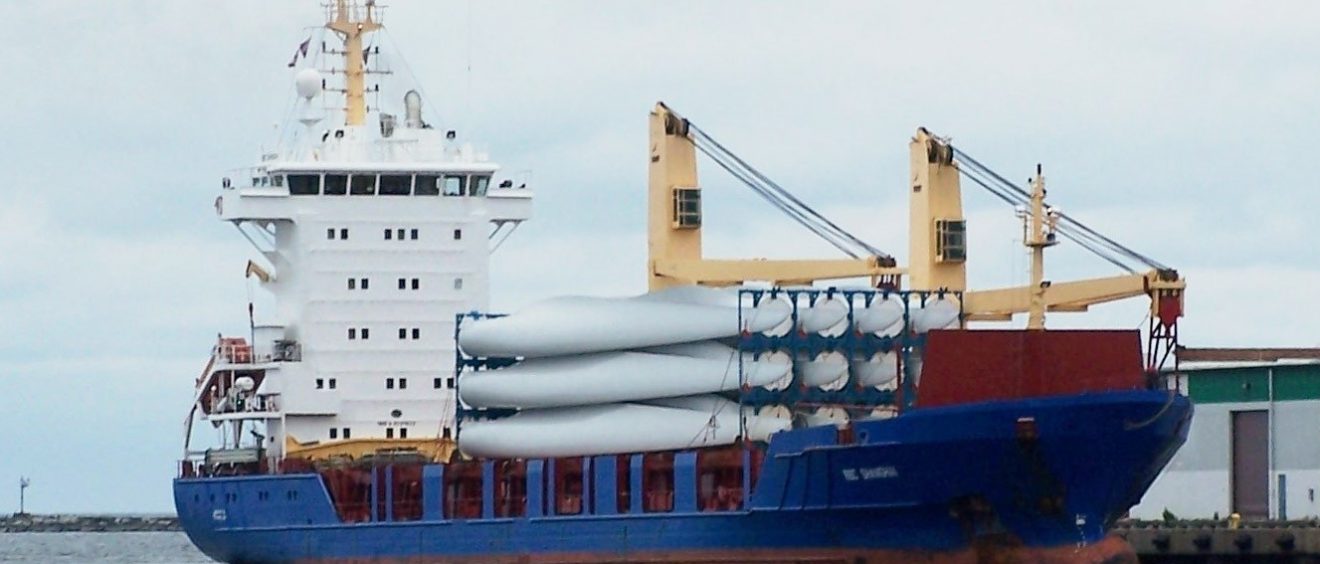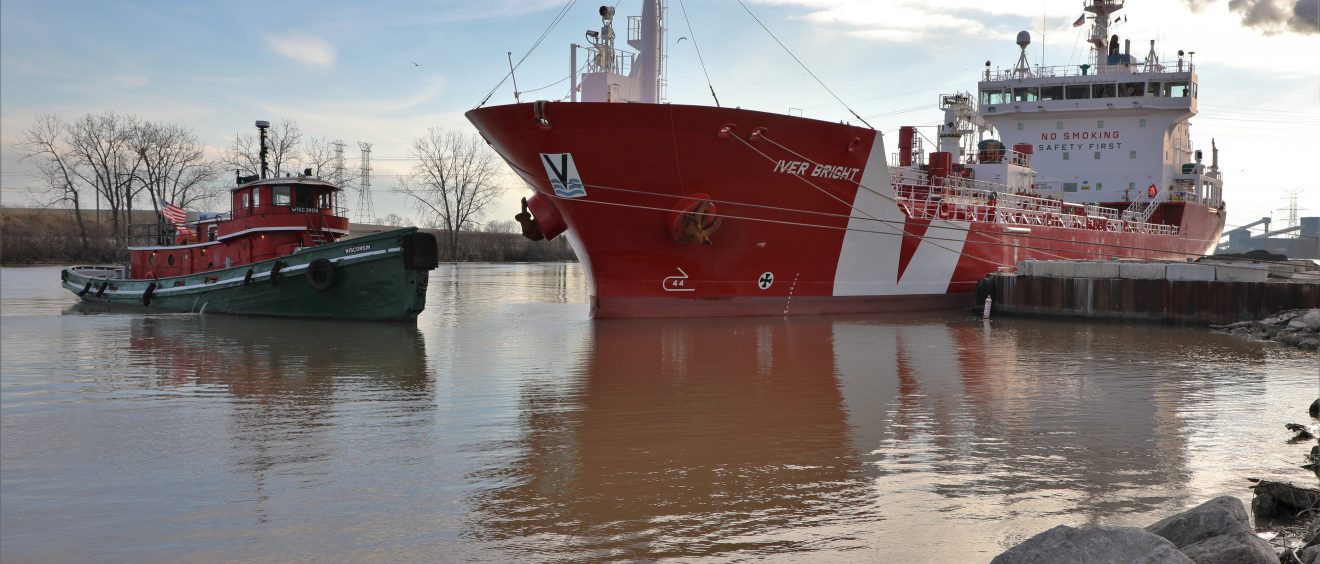Project cargo’s growing diversification role
Throughout the vast Great Lakes-St. Lawrence Seaway system in the United States and Canada, most ports seek to diversify their customer base by developing new business beyond traditional bulk markets. Front and center in their efforts are project cargoes, especially wind energy components destined to meet the rising demands of utilities. On the horizon, too, is a project in Ohio that could soon become the first offshore wind facility in the Great Lakes.

Wind energy has been a key component of the Port of Duluth’s diversification strategy.
Wind Energy Powers Diversification
At the Port of Duluth, the top tonnage port on the Great Lakes (32 million metric tons), the Clure Public Marine Terminal handles high-value general cargo as well as project and dimensional cargoes.
Deb DeLuca, port director of the Duluth Seaway Port Authority, recently stated that “cargo diversity is important to any port and its catchment area. A mix of cargo spells economic stability.”
The port on Lake Superior along the border of Minnesota and Wisconsin has strong expectations for 2020 after shattering a wind energy cargo record last year. In total, Duluth welcomed 306,000 tons of wind energy cargo in 2019. This eclipsed the previous summit of 302,000 tons in 2008. Duluth Cargo Connect managed the unloading, storage and dispatch of the cargo to various sites in the Midwest.
Such a banner performance was termed “no accident” by DeLuca. “We’ve made more than $25 million in strategic investments to the terminal in the past four years, enhancements that help support the excellent work Duluth Cargo Connect does in handling these oversize wind cargoes.”
Indeed, the tower sections are long, but the blades are even longer – with some well past 200 feet.
“Wind energy has been an important part of our cargo portfolio, dating back to our first shipments more than a decade ago,” noted Jonathan Lamb, president of Duluth Cargo Connect. “As the farthest inland port in North America, we’re geographically well situated to support wind farm installations in the Upper Midwest and central Canada. We pride ourselves in providing a seamless connection between modes of transportation for our wind energy customers.”
Strapped for space and needing more laydown area, the port is adding 50,000 square feet of warehouse space and rebuilding two dock walls at a cost of $21 million, with construction planned for 2021-2023. Beyond wind components, Lamb says that Clure Terminal is targeting dimensional cargoes including transformers, reactors, pressure vessels and similar equipment serving mining, manufacturing, and oil and gas industries.
A number of U.S. Great Lakes ports are developing reputations for the efficient handling of project and heavy lift cargo. The Port of Bay City, Michigan on Lake Huron handled five wind energy cargoes in 2019. And the Port of Indiana-Burns Harbor handled one of the more unique project cargoes in 2019 when it moved two huge rubber-tired gantry cranes (RTG) from the port to the CSX Intermodal Terminals’ facility in nearby Chicago. The 68-piece cargo arrived at the Indiana port in June aboard the HC Melina and was discharged from the vessel by Federal Marine Terminal’s (FMT) shore crane for transport to the CSX Intermodal Terminals’ Bedford Park facility, which handles domestic and international freight.
Port of Indiana-Burns Harbor
Ian Hurt of the Port of Indiana-Burns Harbor, said FMT, the general cargo stevedore at the port, could perform two-crane lifts of nearly 200 metric tons, or 440,000 pounds, nearing the top of any port’s capabilities in the U.S. Great Lakes or Canada. “Intermodal transport requires all modes to work together seamlessly, and the gantry crane shipment is an example of the efficient transportation attributes and its connectivity in the Midwest,” Hirt explained.
At the Port of Monroe, Michigan’s only port on Lake Erie, coal remains the top commodity, but Port Director Paul Lamarre III has been a strong proponent of cargo diversity. And this strategy’s success is borne out by growing imports of project cargo and exports of wind tower sections manufactured at the port. More than a dozen BigLift vessels carrying wind components are expected in 2020.

More than a dozen BigLift vessels are expected at Port of Monroe in 2020.
Project cargo and heavy machinery are also handled at such ports as Detroit, Toledo and, of course, Cleveland where the Cleveland-Europe Express service operated by Spliethoff has concluded its sixth season hauling containers and breakbulk cargo between Cleveland and Antwerp.
David Gutheil, chief commercial officer of the Port of Cleveland, told the American Journal of Transportation that the port handles a significant amount of non-containerized steel, heavy lift, heavy machinery and capital equipment. Customers include General Electric, Siemens and Alcoa. He welcomed the contribution of Logistec, which has completed its first year as the general cargo terminal operator.
Proposed Offshore Wind Project on Lake Erie
Looking several years down the road, Gutheil evoked the big potential for the Port of Cleveland of a proposed offshore wind project on the shores of Lake Erie that would constitute the first freshwater wind farm in North America. Known as Icebreaker Wind, the $126 million pilot project consists of six 3.45MW turbines located 8 miles north of Cleveland. LEEDCo, a non-profit PPP, is co-developing the project with Norwegian equity investor Fred Olsen Renewables. Cleveland Public Power has committed to buying 63% of output over 16 years.
The project has won federal approval and has encountered no major public opposition (a good measure of public support, in fact). Assuming the Ohio Power Siting Board gives the green light, possibly by this spring, construction could start in 2021 and commercial operation in 2022. Ultimately, analysts suggest it could transform Ohio into a regional offshore wind-supply chain hub.
“We see much potential for us as a staging center for the energy components,” Gutheil told AJOT.
New Laydown Areas Benefit Canadian Ports
Meanwhile, officials at the U.S. and Canadian Seaway corporations are continuing to put strong emphasis on the Great Lakes/Seaway System as a non-congested and strategically-located alternative to gateways on the U.S. East Coast and Gulf for project and heavy lift cargoes.
Among Canadian ports on the Great Lakes, the newly-merged Lake Ontario ports of Hamilton and Oshawa (now called the Hamilton Oshawa Port Authority, or HOPA) are continuing to develop project cargo and breakbulk business.

Spliethoff has completed six years of its Cleveland-Europe Express service.
On the tip of Lake Superior, the investments by the Port of Thunder Bay (mainly a grain export gateway) on a new laydown area, railway yard as well as a new warehouse scheduled for completion this May are paying off with two large wind turbine projects in Western Canada slated to use the port’s Keefer Terminal for oversized cargo.
We are also handling more structural steel and railway track for Western Canada as a result of our new laydown area,” indicated Tim Heney, chief executive of the Thunder Bay Port Authority.
Another Canadian port focused on bulk shipping that has significantly diversified its customer base due to investments in bigger laydown areas is Johnstown in eastern Ontario. Last year, it welcomed 13 multi-purpose vessels carrying 29 full sets of turbines for a regional wind farm. The laydown areas have likewise accommodated steel construction beams, and steel pipes will start later this year.
Source: American Journal of Transportation



